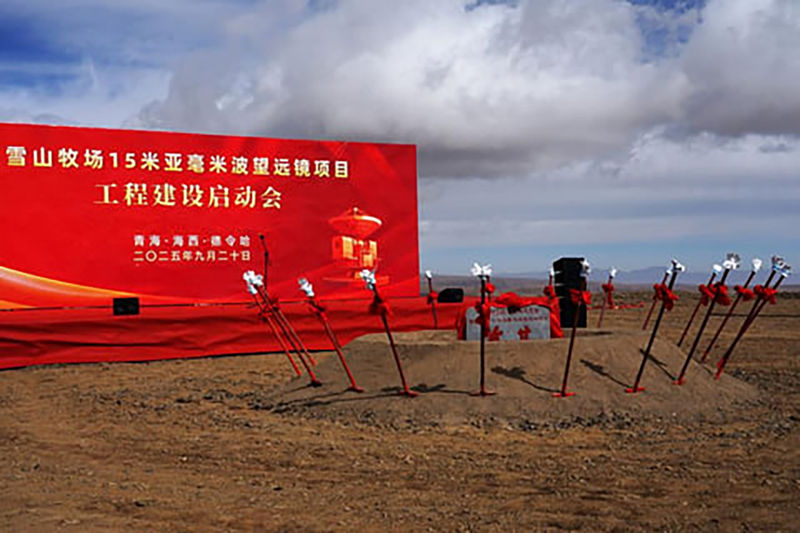China Begins Construction of Advanced 15-Meter Telescope on the “Roof of the World”
Rokna Economic Desk: China has begun building a 15-meter submillimeter telescope on the Qinghai-Tibet Plateau, aiming to advance its astronomical research and explore the hidden universe.

According to Rokna, citing Xinhua, China has officially launched the construction of a major astronomical observation project — the Xue-shan-mu-chang 15-meter SubMillimeter Telescope (XSMT) — on Saturday.
Located on the Qinghai-Tibet Plateau, this initiative is designed to strengthen China’s capacity for exploring the cold and hidden aspects of the universe, filling a critical gap in the nation’s current astronomical infrastructure.
The telescope, with a 15-meter diameter, will be installed in Delingha city of northwest China’s Qinghai Province at an altitude of 4,800 meters. The project is led by the Purple Mountain Observatory of the Chinese Academy of Sciences, headquartered in Nanjing, and is scheduled for completion in 2027.
In cosmic studies, the processes behind the formation of stars and planets are often concealed by interstellar dust, which standard optical telescopes cannot penetrate. Submillimeter wave instruments, however, can detect the cold and dark interstellar gases hidden within the dust. These observations not only reveal the principles of galaxy formation and evolution but also track molecular clues tied to the origins of cosmic life.

Submillimeter research requires unique environmental conditions — particularly low and stable levels of atmospheric water vapor. Scientists note that the telescope’s site, in the heart of the Qinghai-Tibet Plateau, offers precisely these features: high altitude, minimal human activity, and extremely low humidity, making it ideal for advanced observation.
Currently, China lacks its own regularly functioning facilities for submillimeter wave astronomy. Researchers say that the XSMT will bridge this gap and push forward the country’s frontier in astronomical studies.
According to Li Jing, a researcher at the Purple Mountain Observatory, the telescope will target four main scientific fields: extragalactic astronomy, the structure of the Milky Way, time-domain astronomy, and astrochemistry.
The project’s background, development, and future plans were detailed by scientists in an article published Friday in the English-language journal SCIENCE CHINA Physics, Mechanics & Astronomy.

As China’s first independently developed advanced submillimeter telescope, once completed, the XSMT is expected to become part of the next-generation Event Horizon Telescope — a global Earth-sized virtual telescope network — helping capture dynamic black hole images and enhancing China’s competitiveness in international astronomy, the article stated.
Send Comments